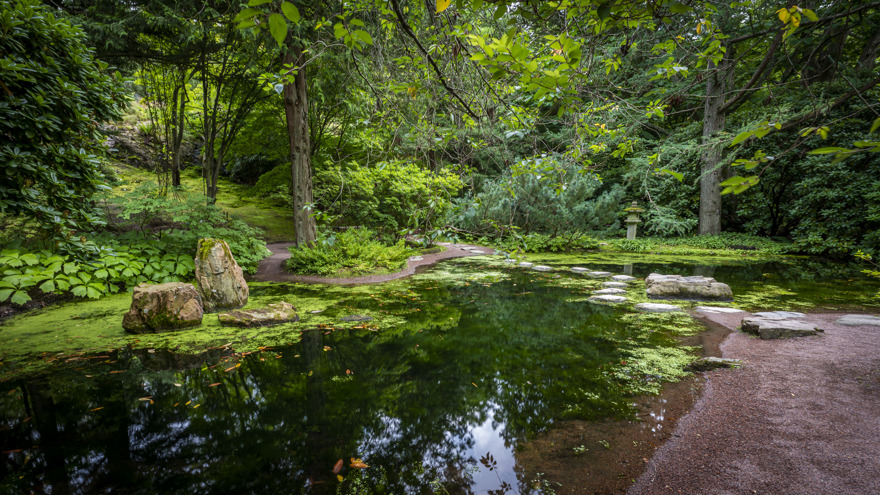Japanese glade

Ever since the time of Carl von Linnaeus, Sweden has had a special interest for the plant world of Japan. Carl Peter Thunberg, probably the most famous of Linnaeus' pupils, arrived in Japan 1775 employed as a physician by the Dutch East Indian Company. After some time he was permitted to collect both plants and animals in the country and published the first scientific flora for Japan in 1784, Flora Japonica.
The interest for Japanese plants in Gothenburg botanical garden started already during the construction years of the garden. The garden was founded in 1923. Thus, seed exchange with Sapporo botanic garden (Hokkaido Daigaku Shokubutsuen) started in the 1920s. During the 1950s a more substantial exchange both of scientists and plants started. Together with his dendrologist (tree expert) Tor Nitzelius, the Director professor Bertil Lindquist, undertook a seed collecting expedition to Japan in 1952. This was followed by several expeditions during the 50s through to the 70s. Professor Lindquist, being a forest geneticist, became a much appreciated lecturer in Japan. An exchange, both of plants, forest researchers and botanists, took place during the 50s until the mid 60s.
To be able to house all the plants resulting from this cooperation, a special area, the Japanese Glade, was founded in 1952. The following year the Arboretum (tree collection) was founded. A substantial number of Japanese trees were planted in the Asiatic part of this extensive tree collection.
The development of the Japanese Glade has continued until today both when comes to plant material and form. The aim with the area is to offer our visitors a more concentrated picture of and give a feeling of the Japanese plant world. Here are to be found nearly all species, and many more, that are typical to Japanese promenade gardens. A special object, an antique Japanese lantern, enhancing the presence of Japan, was given to the garden as a gift by the Japanese Embassy in the 50s. However, the purpose with the area has not been to create a Japanese garden, but hopefully to give a glimpse and idea of the rich nature and culture of Japan.
The interest for Japanese garden culture and the Japanese plant world has also continued until today. Within the international seed exchange program between botanic gardens and arboreta, the garden exchanges material (seeds) with 5-6 Japanese gardens annually.
A bonsai exhibition, one of the first in Sweden, was arranged by the botanic garden in 1985. Some of the bonsai plants exhibited were gifts received from the Japanese Embassy in the 50s. As a result of the exhibition the Swedish Bonsai Society was founded the following year.






